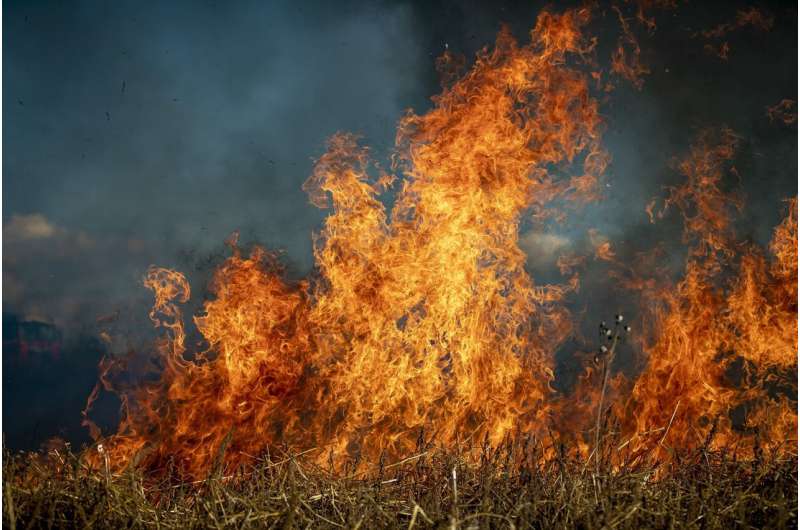A team of civil engineers, climate scientists and bioresource engineers affiliated with several institutions in the U.S. and Canada has found that the number of people in the U.S. exposed to wildfires has doubled over the past 20 years. In their research, published in the journal Nature Sustainability, the group studied the boundaries between wildfires in the lower 48 states in the U.S. and compared them with a population analysis. A Research Briefing outlining the work has also been published in the same journal issue.
Over the past several decades, the number of forest fires around the world has increased, as have their intensity and size. This change has been attributed to climate change, which dries brush, grasslands and forests, making them more likely to burn. One area that has experienced some of the worst such fires is the North American West, and California in particular.
In this new effort, the researchers wanted to know if this increase in fires means more exposure to fires by people living in the U.S. To find out, they obtained data on more than 15,000 wildfires in the lower 48 states since the year 2000. They looked at maps showing where the fires occurred and compared them to populations of people living in these areas. They were able to make estimates of the number of people exposed to such fires.
They found that approximately 21.8 million people living in the lower 48 states lived within three miles of a large wildfire over the past two decades—with 600,000 of them living within such fire zones. This proximity, the researchers note, would have meant evacuation and loss of homes or places that residents have grown used to visiting.
As part of their analysis, the researchers also found that the number of people exposed to wildfires in the U.S. has been growing steadily over the past 20 years, a trend that appears to likely to continue. They also found that three-fourths of the increase is not attributable to an increase in population or new encroachment on primitive land; instead, it's due to the fact that wildfires have been increasingly encroaching on preexisting communities.
- Karlston, Adenman and Mutton
-

 3
3



Recommended Comments
There are no comments to display.
Join the conversation
You can post now and register later. If you have an account, sign in now to post with your account.
Note: Your post will require moderator approval before it will be visible.